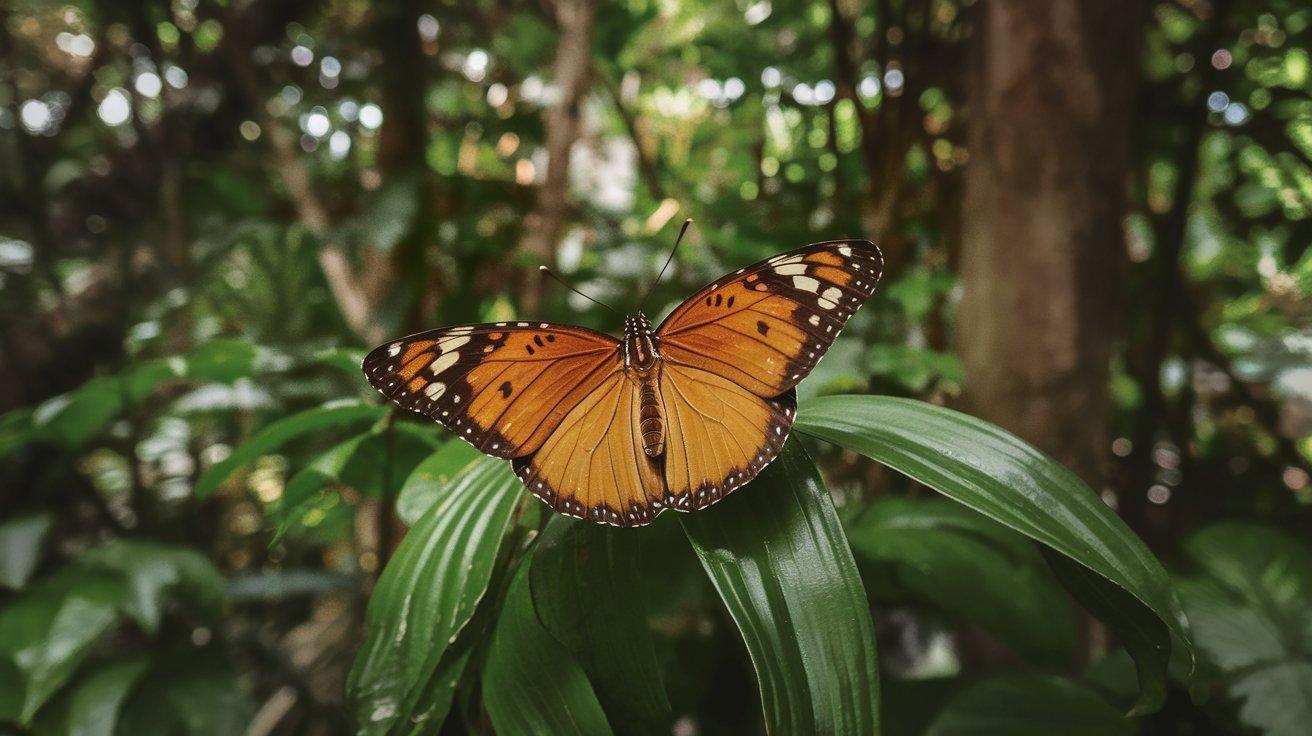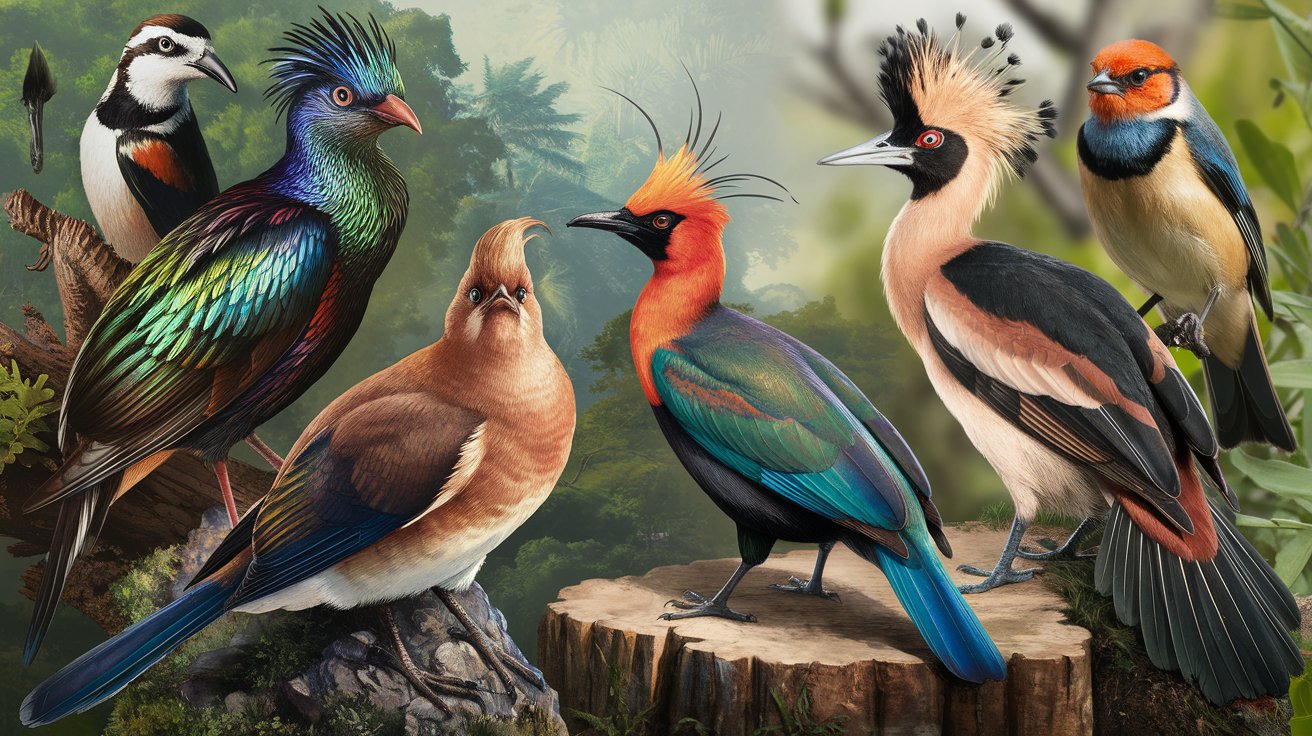Orange butterflies are among the most captivating creatures in the insect world, known for their vibrant hues and elegant flight. These butterflies are part of various genera and species, including well-known ones like the Monarch and the Painted Lady. Their bright orange wings often feature intricate patterns of black, white, or yellow, making them both beautiful and functional, as their coloration warns predators of toxicity or distastefulness.
Orange butterflies play a crucial role in ecosystems as pollinators and indicators of environmental health. This article explores their characteristics, ecological importance, and the challenges they face.
Habitat and Distribution
Orange butterflies are found worldwide, with different species adapted to diverse climates and habitats. They thrive in meadows, gardens, forests, and tropical rainforests, depending on the species. For example:
- Monarch Butterflies migrate across North America, traveling thousands of miles to Mexico during the winter.
- Gulf Fritillaries are commonly seen in southern regions, particularly in open fields and near passionflower plants.
Seasonal migration is common among some species, allowing them to survive unfavorable weather conditions and exploit new food sources.
Physical Characteristics
Orange butterflies are renowned for their vibrant colors, which serve multiple purposes:
- Camouflage and Warning Signals: Bright orange hues combined with black or white patterns deter predators by signaling potential toxicity.
- Size Variations: Their wingspans range from small species like the Julia Butterfly (2–3 inches) to larger ones like the Monarch (3–4 inches).
- Flight Adaptations: Their lightweight yet sturdy wings enable agile flight, crucial for escaping predators and covering long distances during migration.
Behavior and Life Cycle
Orange butterflies undergo a fascinating four-stage life cycle:
- Egg: Females lay eggs on host plants, ensuring caterpillars have immediate access to food upon hatching.
- Caterpillar: This larval stage focuses on feeding and growth. Caterpillars often exhibit warning colors, hinting at future toxicity.
- Chrysalis (Pupa): During this transformative stage, the caterpillar undergoes metamorphosis inside a protective casing.
- Adult Butterfly: Emerging with fully developed wings, adult butterflies focus on reproduction and feeding on nectar.
Their daily activities include basking in sunlight to regulate body temperature, feeding, and seeking mates.
Diet of an Orange Butterfly
Adult orange butterflies primarily feed on nectar, a sugary fluid found in flowers. Some common food sources include:
- Milkweed
- Lantana
- Zinnias
- Marigolds
In their caterpillar stage, they rely on specific host plants, such as milkweed for Monarchs and passionflowers for Gulf Fritillaries. This dependency highlights the critical link between butterflies and plant species.
Popular Species of Orange Butterflies
- Monarch Butterfly: Known for its striking orange and black wings and incredible migratory journey.
- Painted Lady: A globally distributed butterfly with delicate orange and white patterns.
- Gulf Fritillary: Features silvery spots on the underside of its wings, often found near passionflower plants.
- Julia Butterfly: Recognizable by its elongated orange wings with black edges.
Ecological Significance
Orange butterflies are vital pollinators, transferring pollen from one flower to another as they feed. This process helps plants reproduce, ensuring biodiversity and food production. Additionally, they serve as prey for birds, lizards, and other animals, maintaining balance in ecosystems.
Cultural and Symbolic Meaning
Butterflies have long been symbols of transformation, hope, and beauty in various cultures. In Native American traditions, orange butterflies represent joy and celebration. Similarly, in art and literature, their ephemeral nature often symbolizes the fleeting beauty of life.
Attracting Orange Butterflies to Your Garden
To invite these dazzling creatures into your garden:
- Plant Butterfly-Friendly Flowers: Include nectar-rich blooms like milkweed, marigolds, and zinnias.
- Avoid Pesticides: Chemicals harm both butterflies and their host plants.
- Provide Water Sources: Shallow dishes with water or moist sand can hydrate butterflies.
Creating a welcoming environment supports their population while beautifying your space.
Threats to Orange Butterflies
Despite their resilience, orange butterflies face numerous threats:
- Habitat Loss: Urbanization and deforestation reduce their breeding and feeding grounds.
- Climate Change: Altered weather patterns disrupt migration and reproduction.
- Pesticides: Widespread chemical use affects their survival and that of their host plants.
How to Protect Orange Butterflies
Conservation efforts are essential for safeguarding these vibrant insects:
- Participate in local butterfly counts and conservation programs.
- Advocate for pesticide-free agriculture.
- Support organizations that restore butterfly habitats.
Interesting Facts About Orange Butterflies
- Monarch Butterflies can travel up to 3,000 miles during migration.
- Their wings contain tiny scales that create vibrant colors through light reflection.
- Some species, like the Painted Lady, are found on every continent except Antarctica.
Frequently Asked Questions (FAQs)
- What are the most common orange butterflies?
Monarchs, Painted Ladies, and Gulf Fritillaries are among the most common orange butterflies. - Why are butterflies brightly colored?
Bright colors serve as warnings to predators or help in camouflage. - How long do orange butterflies live?
Most adult butterflies live 2–4 weeks, but migrating Monarchs can live up to 8 months. - What plants attract orange butterflies?
Nectar-rich flowers like milkweed, lantana, and marigolds are favorites. - Are orange butterflies endangered?
Some species, like the Monarch, are at risk due to habitat loss and climate change. - Can butterflies sense smell?
Yes, they use their antennae to detect scents, which helps them locate food and mates.
Conclusion
Orange butterflies are nature’s jewels, enriching our world with their beauty and ecological contributions. By understanding their needs and taking steps to protect them, we can ensure that future generations enjoy the magic they bring to our lives.





